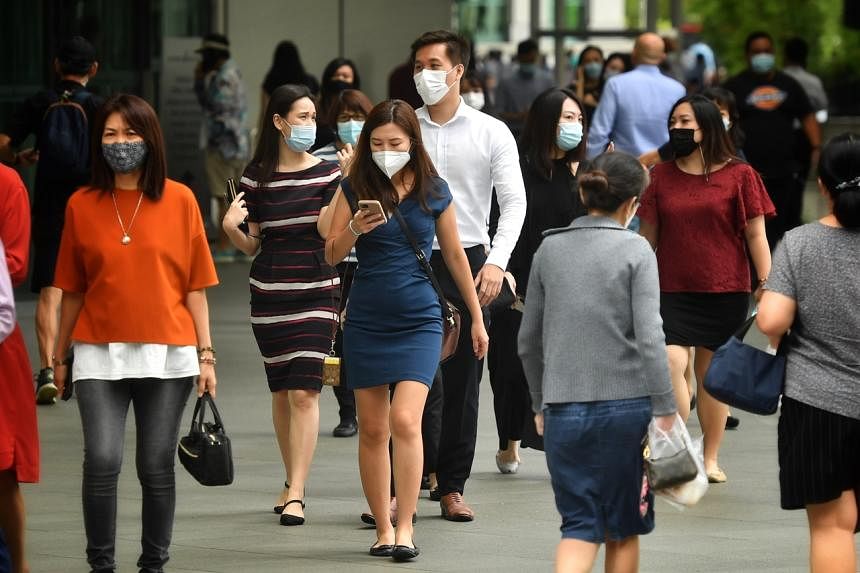SINGAPORE - Singapore’s labour market continues to remain tight, with a large number of job vacancies still waiting to be filled even though resident employment has already surpassed pre-pandemic levels.
In a further sign that employers are trying to hang on to their workers, retrenchments have fallen to record lows while the unemployment rate has dipped further.
There were 126,100 job vacancies in June this year - slightly lower than the 128,100 vacancies in March, but far higher than the 117,100 vacancies recorded in December last year.
Before the latest numbers were revealed in the labour market report for the second quarter of 2022 on Wednesday, job vacancies had climbed for seven straight quarters, indicating that employers were finding it hard to find workers.
In June there were 2.53 vacancies for each unemployed person, showing that the market had tightened even further since March, when there were 2.42 vacancies to each unemployed person.
Meanwhile, the market continues to soak up available workers.
Total employment grew 66,500 in the second quarter, significantly higher than the 42,000 increase in the previous quarter, and the highest since the second quarter of 2008.
The latest round of employment growth means total employment has reached 99.5 per cent of the pre-pandemic level in December 2019, noted the Ministry of Manpower (MOM).
Driving much of the increase in the second quarter, at 59,400, were non-residents, especially in construction and manufacturing, as employers backfilled positions following the significant relaxation of border controls back in April.
However, non-resident employment remains 10 per cent below the pre-pandemic level.
“We expect non-resident employment to continue to grow at a robust pace, as it catches up to its pre-pandemic level – this will help ease labour market tightness,” said MOM.
Resident employment, comprising Singaporeans and permanent residents, rose to 4.2 per cent above the pre-pandemic level in June 2022, with the largest increases recorded in financial and insurance services, information and communications and professional services.
Singapore’s overall unemployment rate declined further to 2.1 per cent in July from 2.2 per cent in March, while the resident unemployment rate declined from 3 per cent to 2.9 per cent over the same period.
Meanwhile, retrenchments fell to 990, rewriting the previous record low of 1,320 in the first quarter.
This translates to a retrenchment rate of five per 10,000 employees.
“Like previous quarters, the few retrenchments that did occur were mainly due to business reorganisation or restructuring.
“Poorer business and higher costs were also common reasons for the retrenchments in Q2 2022, as global headwinds weigh on business sentiments of retrenching firms,” said MOM.
The recruitment rate rose over the quarter to 2.6 per cent, a rate last seen in 2014.
“On the other hand, the resignation rate remained stable at 1.7 per cent for the fourth consecutive quarter,” noted MOM.
It added that accommodation and air transport, and its supporting services saw the largest increase in recruitment rates.
MOM said: “Tourism- and aviation-related sectors are expected to continue to benefit from the strong recovery in air passengers and international visitor arrivals.”
The resident long-term unemployment rate - which refers to those who are out of a job for at least 25 weeks - declined to 0.7 per cent in June, from 0.8 per cent in March.
However, older residents aged 60 and above continue to face higher levels of unmployment, including long-term unemployment.
Permanent secretary for manpower Ng Chee Khern said the ministry has seen an increase in the number of jobseekers in the age group. This was a key reason for extending the Jobs Growth Incentive wage support scheme for another six months to March 2023.
MOM also said demand in consumer-facing sectors such as food and beverage services should remain robust with the easing of domestic and border restrictions.
“On the other hand, growth in outward-oriented sectors like finance and insurance services is expected to slow amid global economic headwinds.”



